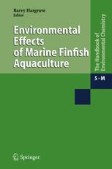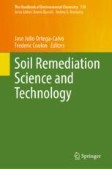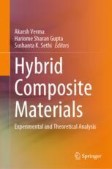Search
Search Results
-
A microcosm experiment on sediment remediation: microbial community assessment in sediment in presence of granulated coal ash
Coastal areas contain buildup of mixed organic and inorganic contaminants, which promote deterioration or sediment and impairment of benthic life....

-
Application of oyster shells in the remediation of marine sediment
PurposeThe aim of this article is to review the usage of waste oyster shells for marine sediment remediation. Sediments act as sources and sinks of...

-
Synergistic Approaches for Enhanced Remediation of Polluted River Sediment
In recent years, there has been a growing emphasis on integrated approaches for removing metals from sediment. Electrokinetic (EK) treatment stands...

-
Sediment and Remediation of Aquaculture Ponds
The soil carries the water of the pond. The sediment or bottom mud of aquaculture pond is an important part of pond ecosystem. The nutrient exchange...
-
Both Sides of Coin: Benefits and Potential Negative Consequences of Biochar in Sediment Remediation
Biochar has been widely used for in situ remediation of sediments in recent years because of its advantages including suitable surface area, pore...

-
Remediation of Environmental Contaminants Through Phytotechnology
Environmental pollution caused by organic pollutants, radionuclides, and potentially toxic elements (PTEs) affects the quality of the biosphere...

-
Acidophilic microorganisms in remediation of contaminants present in extremely acidic conditions
Acidophiles are a group of microorganisms that thrive in acidic environments where pH level is far below the neutral value 7.0. They belong to a...

-
Role of Biosurfactants in Marine Sediment Remediation of Organic Pollutants
The contamination of marine sediments due to pollutant accumulation is widespread in coastal regions of the world. Of major public concern are...
-
Integrated application of green zero-valent iron and electrokinetic remediation of metal-polluted sediment
AbstractIn recent years, more focus has been placed on integrated metal removal processes. Electrokinetic (EK) treatment is superior to other...

-
Sediment Geochronologies for Fish Farm Contaminants in Lime Kiln Bay, Bay of Fundy
Sedimentation rates were measured on gravity cores collected near finfish cages in Lime Kiln Bay, N.B. in the Western Bay of Fundy using the...
-
Physicochemical Remediation of Soil Contamination: From Laboratory to Field
Soil physicochemical remediation technologies are crucial for the restoration of contaminated soil. As science and technology has developed by leaps...
-
Review of the application of surfactants in microemulsion systems for remediation of petroleum contaminated soil and sediments
Microemulsions are important for soil and sediment remediation technology. The characteristics of the surfactants that make up these microemulsions...

-
Phytoremediation and Contaminants
The increase in population, industrialisation and urbanisation is the main cause of the huge and deep discharge of contaminants in soil, surface...
-
Plant–Microbe Associations in Remediation of Contaminants for Environmental Sustainability
Pollutants are the substances that lead to undesired effects on the environment and pose a threat to all forms of life. The accumulation of these...
-
Probabilistic analysis of georisk from cap** of contaminated sediment in Gunneklev Fjord, Norway
The seabed of the Gunneklev Fjord in south-eastern Norway is covered with exceptionally soft contaminated sediment containing mercury and dioxins....

-
Polymer Composites for Environmental Solutions and Remediation
Polymer composites stand as instrumental tools in addressing contemporary environmental challenges, offering innovative and sustainable solutions....
-
Sediment microbial fuel cells for bioremediation of pollutants and power generation: a review
Worldwide pollution of almost all natural media by toxic compounds is a major public health issue requiring the development of advanced remediation...

-
Use of ARP industrial waste in the remediation of cadmium, lead and zinc in contaminated sediments
The most common contaminants in the earth’s crust are heavy metals. Remediation is a technique to immobilize, remove, or detoxify these metals in...

-
Nano-Remediation Perspectives
A variety of organic and inorganic pollutants that are harmful to the environment and human health have been driven by many global events, such as...
-
The Influence of CSBT on the Release of Pollutants from Sediment
Sediment particles widely exist in natural waters, and have an important impact on complex physico-chemical processes. The electrochemical properties...
